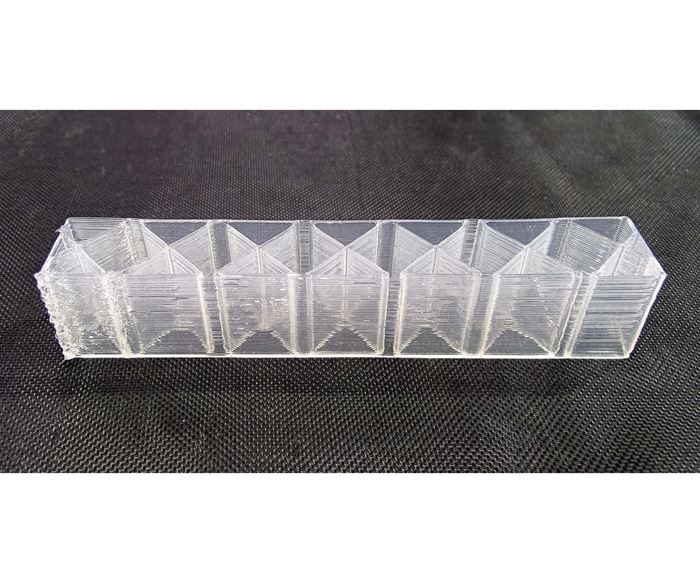3D Printing LSR
Yes, you read that right: Liquid silicone rubber (LSR) is 3D printable.
At NPE2018 in Orlando, Fla., Distributor RDAbbott, Cerritos, Calif., showed off a system for 3D printing with LSR, developed by Dow Silicones (previously Dow Corning), Midland, Mich., and German RepRap, a maker of 3D printing equipment.
Called Liquid Additive Manufacturing (LAM), the system injects liquid A and B components from two pressurized tubes into a pump that maintains a 1:1 ratio. The pump feeds a head under x-y motion control, which and lays down a continuous bead, similar to FDM or FFF-style 3D printers. The system deposits layers as thin as 0.2 to 0. 35 mm thick, which are fully cured by a heat lamp, a whole layer at a time. The system uses Dow’s Evolv3D LC 3335 LSR material, which produces a 44 Shore A hardness without post-cure and 46A with post-cure. The LAM 3D printer reportedly produces parts with 100% of the tear strength of injection molded samples, 90% of their tensile strength and hardness, and 85% of their elongation. Applications in development include honeycomb custom orthotic shoe soles.
The patent-pending printer was introduced last year; it can print at 10 to 150 mm/sec, depending on the geometry. Dow is developing additional LSR grades, expected later in the year, that will offer other Shore A hardnesses.
Though remarkable, this is not the first 3D printing system for LSR. The German parent of Wacker Chemical Corp., Adrian, Mich., introduced the ACEO system of hardware and LSR materials for 3D printing in 2016 (see our K 2016 report in Feb. ’17).
Related Content
-
Prices of All Five Commodity Plastics On the Way Up
Despite earlier anticipated rollover in prices for most of the volume commodity resins, prices were generally on the way up for all going into the third month of first quarter.
-
Commodity Resin Prices Flat to Lower
Major price correction looms for PP, and lower prices are projected for PE, PS, PVC and PET.
-
First Quarter Looks Mostly Flat for Resin Prices
Temporary upward blips don't indicate any sustained movement in the near term.














